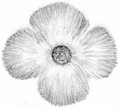Electoral Reform and the 1918 General Election
The 1914, 1915 and 1918 Electoral Rolls have played an important part in our research in trying to work out which men from the villages may have served in WW1. By 1918 all males who had turned 19 during service in connection with the war could vote even if they were under 21 and are indicated by “NM” (Navy Military) next to their name on the rolls.
Background
Following the 1832 Reform Act periodic demands continued for the extension of the rights to vote. The Reform Acts of 1867 and 1884 extended parliamentary voting rights: firstly in 1867 to urban male householders and male lodgers and secondly in 1884 to men living in the countryside (under the same conditions). However, even after the passing of this Act only 60% of all male householders over the aged of 21 had the vote by virtue of their occupation and /or dwelling or land ownership.
During this time important rights for women were being fought for, with some won and others not. The 1869 Municipal Franchise Act gave the vote to some women rate-payers in local elections. The 1888 County Council Act also gave women the vote at county and borough council elections.
In 1897 Millicent Fawcett formed the moderate National Union of Women’s Suffrage Societies to further the cause of securing the parliamentary vote for women. In 1903 Emmeline and Christabel Pankhurst formed the Women’s Social and Political Union and a more militant campaign ensued.
The Representation of the People Act 1918
Following the horrors of WW1, millions of returning soldiers would still not have been entitled to vote in the long overdue general election and so changes were made to both men and women’s eligibility to vote.
The terms of the Act included:
⦁ All males over 21 gained the vote in the constituency where they were resident. Males who had turned 19 during service in connection with WW1 could also vote even if they were under 21, although there was some confusion over whether they could do so after being discharged from service. The Representation of People Act 1920 clarified this in the affirmative, albeit after the 1918 general election.
⦁ Women over 30 years old received the vote if they were either a member or married to a member of the Local Government Register, a property owner, or a graduate voting in a University constituency.
Sources: Wikipedia & National Archives
In Barton Turf of the 156 eligible voters 61 were women. Of the 61, 51 were eligible to vote because of their husband’s occupation, but ten from the village were able to vote in their own right.
1918 Register of Electors
When looking at the 1918 Register of Electors the qualification for voting was still a complex system, but when undertaking our research it enabled us to see which men had seen active service during WW1
There were however, a number of men for whom we could not clarify their service and they have, therefore, not been included in our memorial. If, at a later date, confirmation of this is found, their names can be included on the memorial.
The General Election of 14th December 1918 resulted in a landslide victory for the coalition government of David Lloyd George who had become Prime Minister in 1916. Lloyd George called for making “a country fit for heroes to live in”. But what was the election result for Neatishead, Irstead and Barton Turf who fell within the Norfolk East Constituency? Read more
